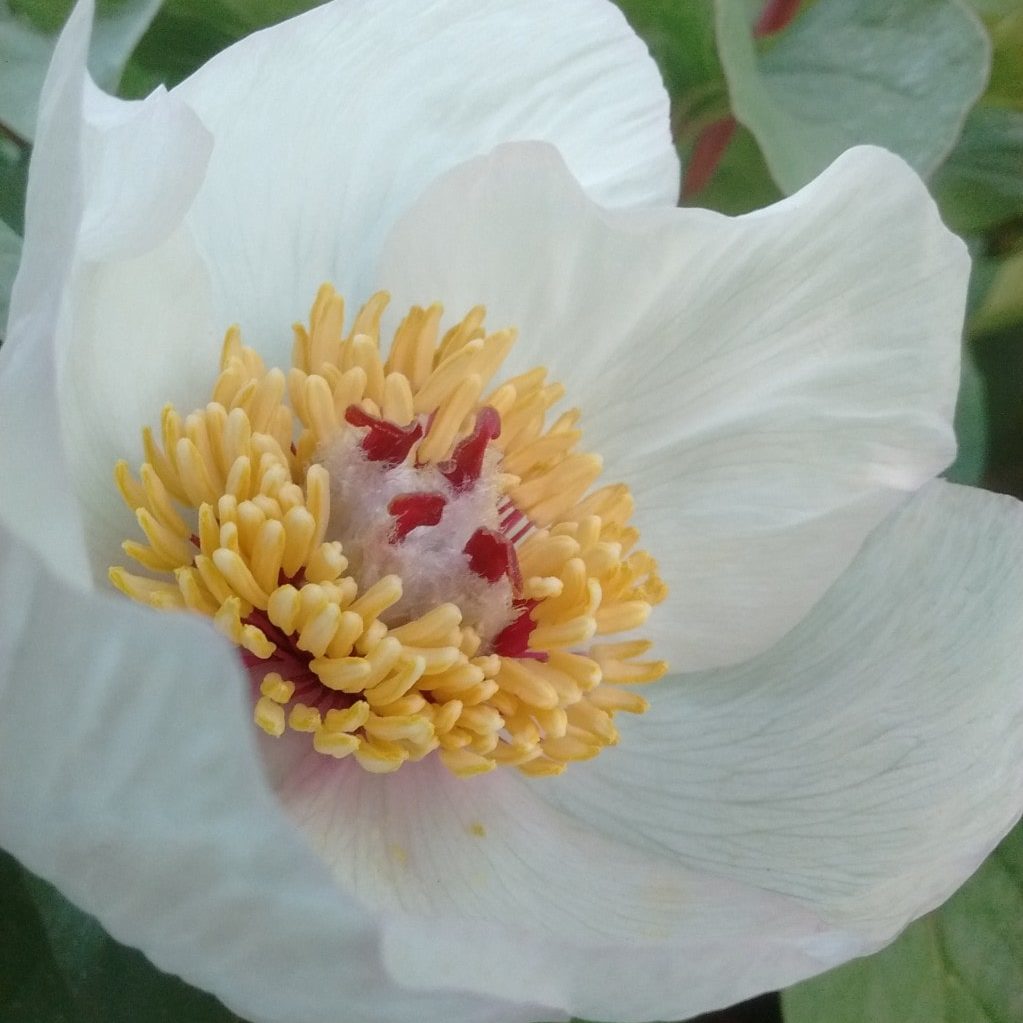Hello, does anyone have photos of peonies that were sprayed with a chemical containing glyphosate
7 CommentsW polskiej literaturze też brak takich informacji, parę lat temu kupiłam piwonie od jednego hodowcy który używa tego środka w celu eliminacji chwastów z piwonii, /jedną lactiflore oraz suffruticosa/ wówczas spotkałam się z tym pierwszy raz i nie wiedziałam co się dzieję sądziłam że może są zarażone przez nicienie, , ale w trakcie rozmowy z panem wyszło że wykonuje opryski na chwasty z użyciem glifosatu. Miałam je spalić z obawy przed chorobami i zakażeniem innych ale po uzyskaniu informacji postanowiłam je zostawić w celu obserwacji ,zostały posadzone na wszelki wypadek z dala od innych roślin. Lactiflora 4 lata nadal karłowatość, poskręcanie i przebarwione łodygi bez kwiatów, natomiast suffruticosa brak wzrostu ,również mocno zdeformowane liście, po 4 latach zaczęła mieć normalne liście ale nadal bez przyrostu ok 15-20 cm pomimo dobrego nawożenia /obornik koński /zawiązała jeden pąk kwiatowy powinna zakwitnąć w tym roku. Szukam informacji naukowych w celu przedstawienia informacji na grupie Piwonie w Polsce i peoniofile ,żeby uświadomić jak zły wpływ na piwonie ma glifosat i jego pochodne .W Polsce nadal bardzo często używany przez amatorów ,drugi problem to używanie różnych agrotkaninn i sztucznych mat do ściółkowania w celu eliminacji chwastów co też jest bardzo szkodliwe dla roslin
There is also no such information in Polish literature, a few years ago I bought peonies from one grower who uses this agent to eliminate weeds from peonies, / one lactiflore and suffruticosa / then I saw it for the first time and I did not know what was happening, I thought maybe they are infected by nematodes, but when talking to you, it turned out that he was spraying weeds with glyphosate. I was supposed to burn them for fear of disease and infection of others, but after getting the information, I decided to leave them for observation, they were planted, just in case, away from other plants. Lactiflora 4 years still stunted, twisted and discolored stems without flowers, while suffruticosa lacks growth, also badly deformed leaves, after 4 years it started to have normal leaves but still no growth of about 15-20 cm despite good fertilization / horse manure / set one flower bud should bloom this year. I am looking for scientific information to present information on the group Peonies in Poland and peoniophiles, to show how bad the influence of glyphosate and its derivatives on peonies. elimination of weeds which is also very harmful to the plants
@edyta-bialous-cieslak Leaf nematodes usually give the following symptoms here: stunted growth, deformed leaves, lack of buds or flowers on stems. So many symptoms are alike. Dead foliage between the leaf veins and not going through them is a tell-tale sign of leaf nematodes which you won’t see as a result of glyphosate, this usually shows later in the season after flowering. I think I must have some images of leaf nematode damage, I’ll have a look. The discoloration of leaves is not a symptom of nematodes however, that is purely the result of chemicals.
I couldn’t locate any images of leaf nematode damage immediately, but I remember making a video of some of them a couple of years ago which I posted here on the site. The difference between infested plants and healthy plants is very clear from that I think:
@edyta-bialous-cieslak You’re lucky (and I’m less so) as I found I do have some plants growing now that have herbicide damage. Roundup (glyphosate) was sprayed just prior to them starting to grow, most plants show no damage, but this one is the first one of the row, so probably it has received an overdose of it. It didn’t kill it, but the discoloured leaves are typical of herbicide damage. Here are the images:
If you click on the image a pop-up will appear with a larger image and if you want it even larger then right-click on that pop-up and select ‘open image in a new tab window’ after which you’ll get the largest image with quite good detail I would think.









I don’t have any image (and I couldn’t find any in Dutch literature as well). Mostly glyphosate isn’t used in peonies. Only in Winter when they bud are fully underground is it still being used to kill of the weeds. But if you use it when actively growing, you’ll nearly always have some damage.
When sprayed from above on the plants themselves they’ll usually turn yellow and may give discoloured flowers (if they flower at all). Depending on how much has been sprayed, they may recover the following year, but if the application rate was too high, they’ll be gone. Somewhere in between is if the following year they appear with foliage in shades of different colours (pink, orange, yellow, red) and stunted growth. In my experience that’s only a last death-struggle before vanishing forever. If they have been sprayed only at the base of the stems, you may see some black dots appearing on the stems where the fine droplets touched it. Those stems may either die or give a somewhat stunted flower again, but in this case the plant will also give good normal stems and will usually fully recover the following year.
Glyphosate (the ‘old’ roundup in Europe, not the new now available version available in retail shops (glyphosate can nowadays only be used by professionals)) is not usable when the plants are actively growing. It is also taken up through the roots and if you spray grasses next to peonies, the roots of those grasses may eventually transport it to other places closer to the peony roots. We have used it sometimes (but more often its ‘safer replacement’ (less movement through roots) glufosinate-ammonium (trade name ‘Basta’ here), but find that even when used very cautiously there will nearly always be some damage (mostly those black spots on the stems). Therefore other, probably less efficient, herbicides should be used in fields of growing peonies.